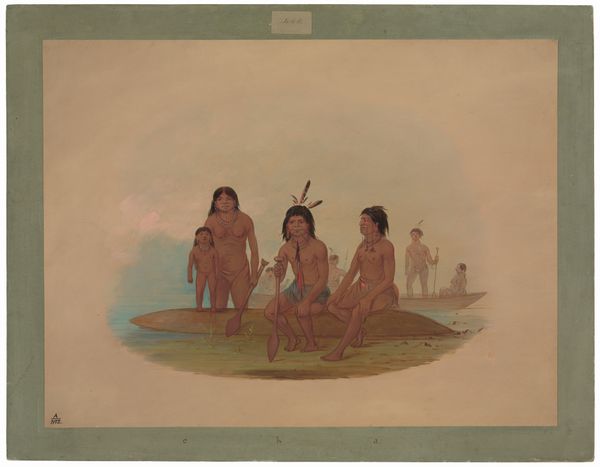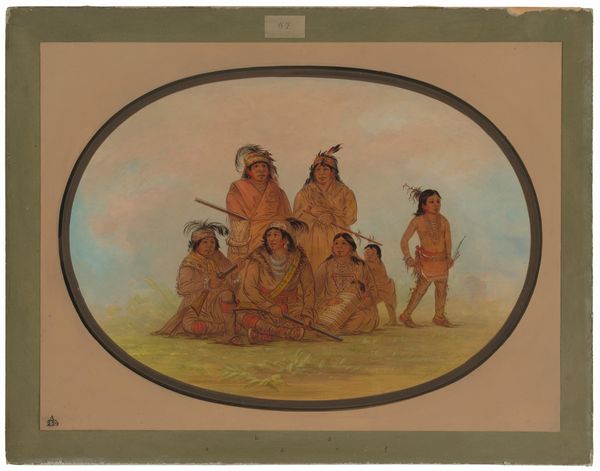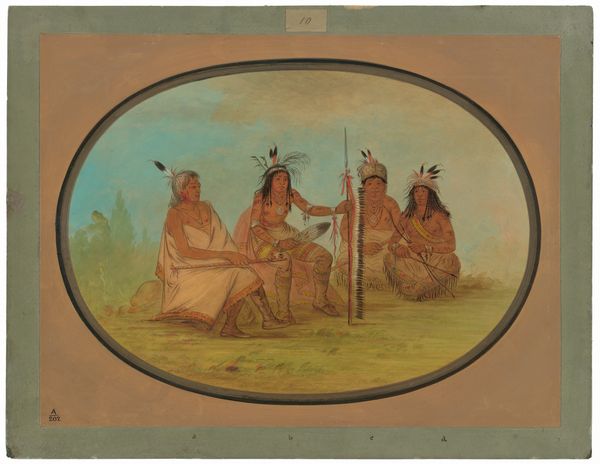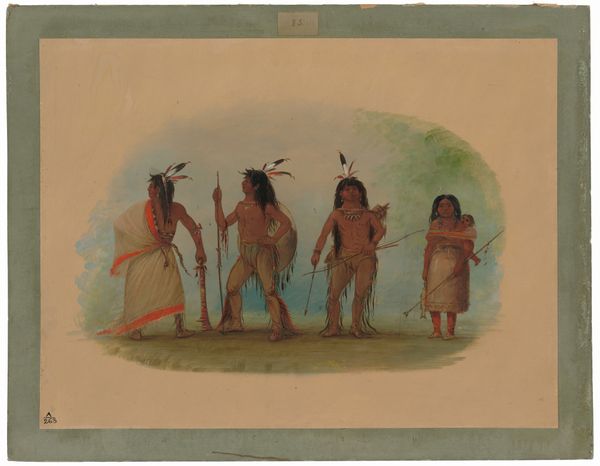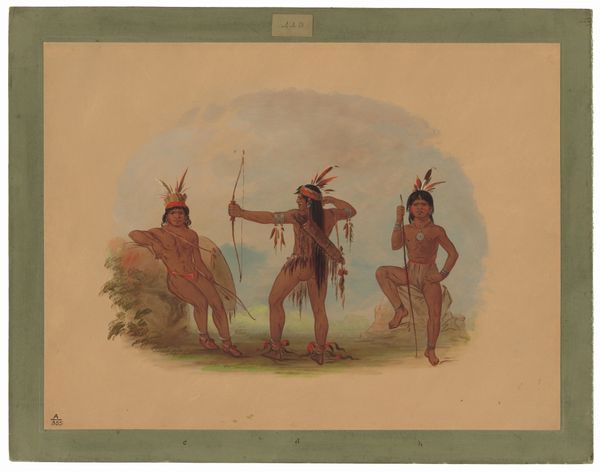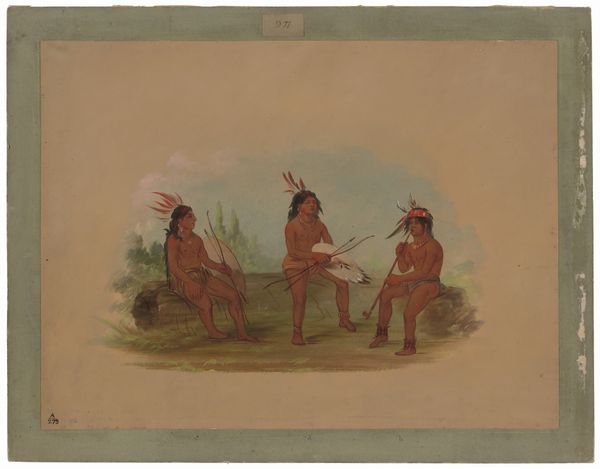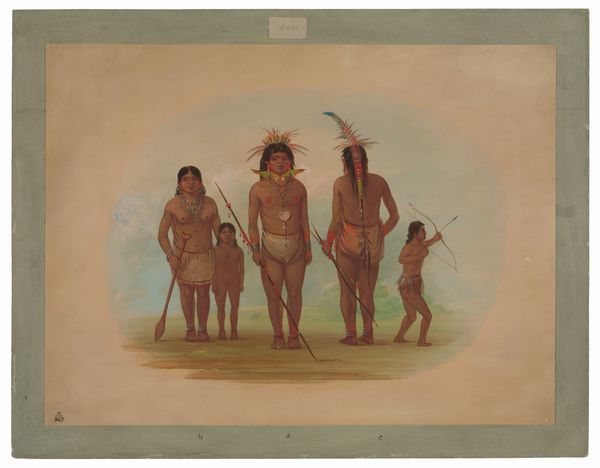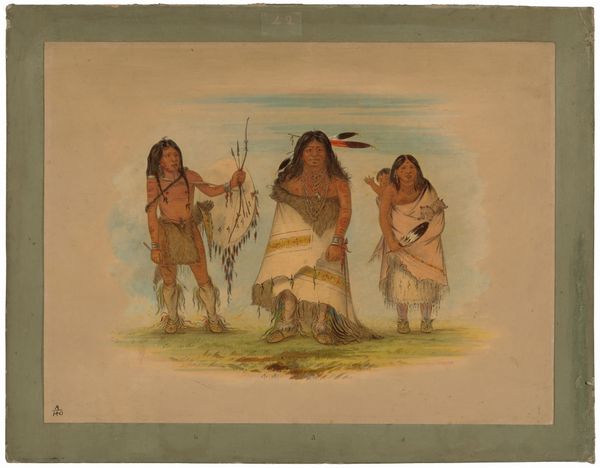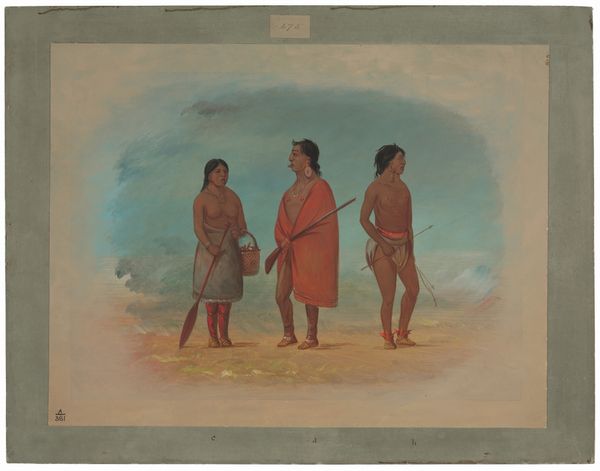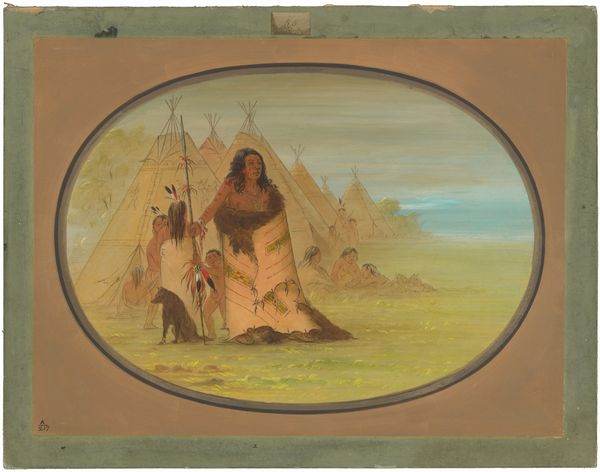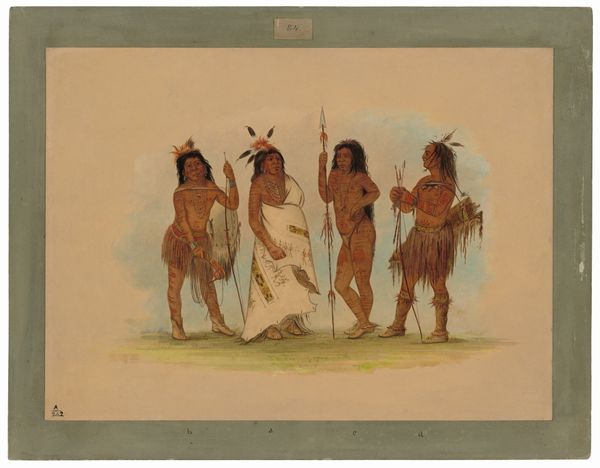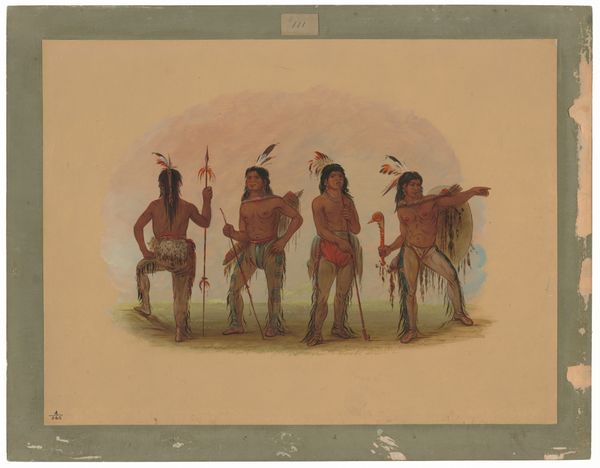
gouache, paper
#
portrait
#
water colours
#
gouache
#
paper
#
watercolor
Dimensions: overall: 46.5 x 62.1 cm (18 5/16 x 24 7/16 in.)
Copyright: National Gallery of Art: CC0 1.0
Editor: This watercolor, "An Aged Minatarree Chief and His Family," was created by George Catlin sometime between 1861 and 1869. I find the use of watercolors on paper really interesting given the context of Indigenous representation at that time. What do you see in how Catlin approached the materials? Curator: Well, let’s think about watercolor's materiality itself. It’s often seen as preparatory, a study, or even amateur – certainly, it has connotations of 'feminine' artistic practice from this time period. Given Catlin's project to document Indigenous people, this choice in material undermines assumptions of grandeur usually associated with official portraiture in oil painting. It hints at the realities of its production and invites questions about its social circulation and its audiences. Editor: That's fascinating. It suggests the 'means' don't necessarily line up with the apparent 'ends.' Do you mean the medium clashes with the ambition? Curator: Exactly. Look at the 'support', which is just paper. It would have been comparatively easier to transport than canvases – fitting for an artist traveling through Indigenous territories, acquiring their drawings for study and perhaps barter. Then, reflect on the act of representing Indigenous people and customs through a material associated with a European tradition, often of less social standing. Editor: It seems almost… contradictory. Almost like cultural appropriation in visual form, especially given the documentary purpose. Curator: Precisely. Considering how watercolors were viewed as 'lesser,' the very act of documenting in this form reveals much about how the culture and its materials were perceived by those who commissioned these kinds of records and the status that followed. It shows us about social context just as much as artistry. Editor: So, the very choice of medium speaks volumes about power, access, and how Indigenous subjects were regarded by the dominant culture? Curator: Yes. The means of production, the availability of materials, and the social status assigned to different media provide crucial layers to interpreting the work's overall message.
Comments
No comments
Be the first to comment and join the conversation on the ultimate creative platform.
